How AI Improves Soil Moisture Data Analysis
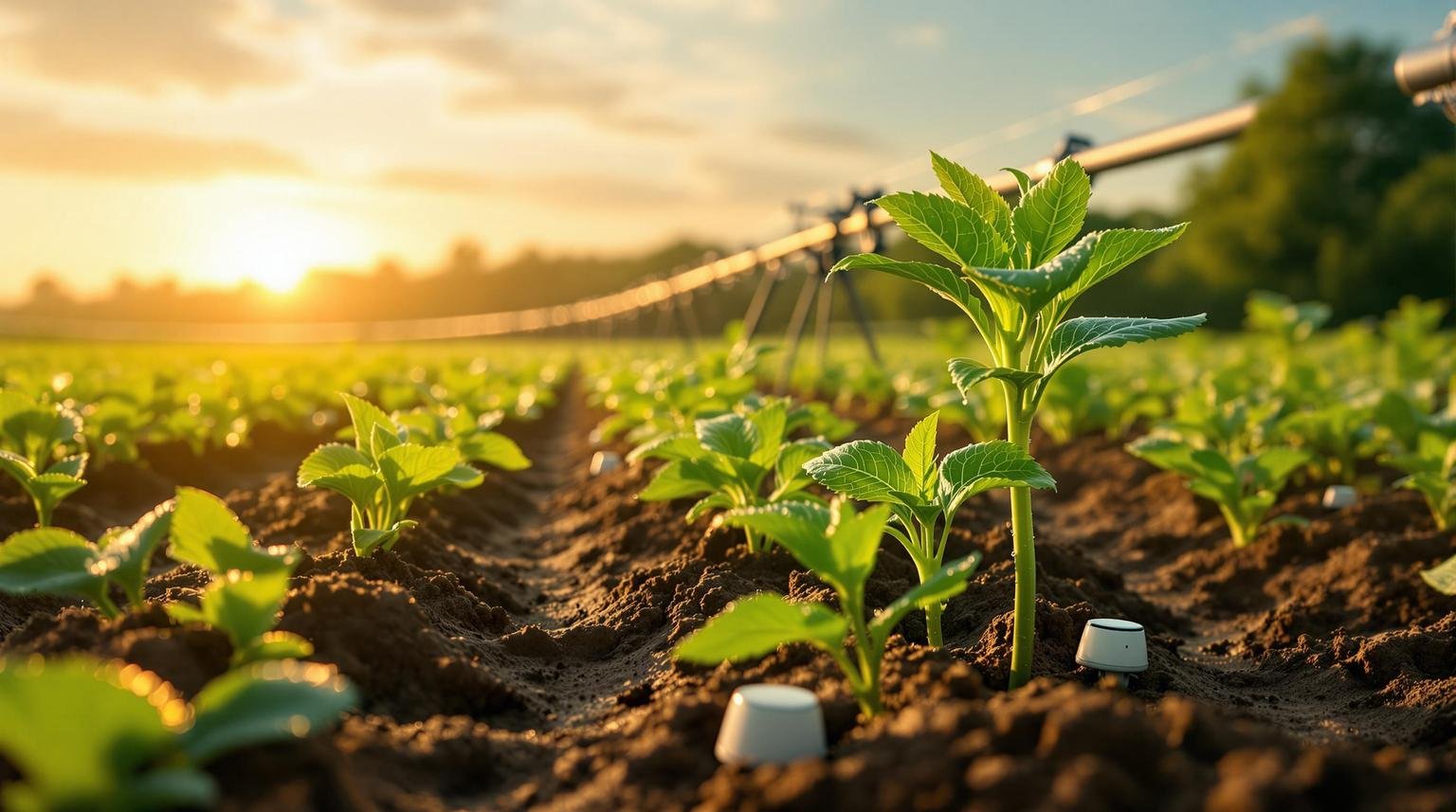
AI is changing how we manage soil moisture, saving water and improving plant health. Here's how:
- Save Water: AI-powered irrigation systems reduce water use by up to 25%.
- Boost Yields: Crop yields increase by 20–30% with smarter watering.
- Accurate Data: AI cleans and combines data from sensors, satellites, and weather forecasts for precise insights.
- Fast Predictions: Machine learning predicts soil moisture trends, helping you water at the right time.
- Tailored Care: AI tools suggest plant-specific watering schedules and detect issues like pests or diseases early.
AI tools are already helping farmers and gardeners save time, cut costs, and grow healthier plants. Whether you're managing a garden or a farm, AI makes soil moisture management smarter and more efficient.
Developing AI for Soil Moisture and Nutrient Monitoring in Malawian Agriculture

How AI Makes Soil Moisture Data More Accurate
Traditional soil moisture sensors often face challenges like noise, inconsistency, and limited interpretative capabilities. For example, a single sensor might produce readings that are influenced by electrical interference, calibration drift, or environmental conditions. AI steps in to address these issues by analyzing multiple data sources and correcting inherent sensor inaccuracies.
AI integrates data from various sources - soil moisture sensors, weather stations, satellite imagery, and cosmic ray neutron sensors - to create a more detailed and reliable picture of soil conditions. Cosmic ray neutron sensors, in particular, can assess soil moisture over areas of 50–75 acres (roughly 20–30 hectares). By combining these diverse inputs, AI develops a comprehensive view of soil moisture, ensuring that no single sensor's limitations skew the results.
Using AI to Process Sensor Data
AI algorithms are particularly adept at spotting patterns and filtering out interference that might go unnoticed by humans. Soil moisture sensors often capture environmental noise or inaccurate readings, but AI tools can clean up this data. Research demonstrates that AI can effectively remove noise from soil water content (SWC), electrical conductivity (EC), and direct current (DC) measurements, leading to more dependable results.
Artificial neural networks (ANNs) play a key role here. They are trained to separate genuine moisture signals from background noise, refining raw sensor data into cleaner, more precise measurements. This enhanced accuracy allows gardeners and farmers to make better irrigation decisions with confidence.
AI also automates the alignment of statistical distributions across different sensor types, eliminating the need for manual bias corrections. This process not only saves time but also reduces the risk of human error, creating consistent and reliable long-term datasets for soil moisture monitoring.
Speed is another advantage. Traditional statistical tools often take longer to interpret data, which can delay crucial irrigation decisions. AI, on the other hand, processes sensor data quickly, enabling timely responses when plants need immediate attention.
With this refined data, machine learning models can step in to predict future moisture levels with impressive accuracy.
Machine Learning Models for Predicting Moisture Levels
Once the data is cleaned and standardized, machine learning models can forecast soil moisture trends, enabling proactive irrigation planning. These models analyze historical data, weather forecasts, and environmental variables to predict future moisture levels. This helps gardeners and farmers act before plants show signs of stress.
Tree-based ensemble models like XGBoost and LightGBM have shown exceptional performance in soil moisture prediction. In a 2024 study by Teshome et al., XGBoost achieved accuracy scores of 0.86 for green beans and 0.88 for sweet corn in predicting sub-hourly soil moisture content. LightGBM delivered similarly strong results, with scores of 0.85 and 0.88 respectively. These models draw insights from vast datasets that include soil composition, weather trends, plant growth stages, and irrigation history, uncovering hidden relationships between soil and environmental factors.
Stacking ensemble models take this a step further by combining multiple machine learning techniques to enhance accuracy. For instance, the stacking all boosting classes ensemble-learning model (SABM) achieved an accuracy score of 0.861, outperforming individual models in recent tests. This approach leverages the strengths of various algorithms, compensating for their individual weaknesses.
The practical benefits of these AI-driven techniques are clear. AI processes data objectively and in real time, removing the need for subjective interpretation or lengthy laboratory tests. Instead of waiting days for lab results, AI provides instant predictions that adapt to changing weather conditions.
Additionally, machine learning reduces the costs and labor associated with traditional soil testing. There’s no need to send soil samples to a lab or manually check moisture levels over large areas. AI continuously processes sensor data and adjusts recommendations automatically, saving both time and resources.
Better Irrigation Through AI Tools
AI is transforming irrigation by turning soil moisture data into precise, real-time watering plans that conserve water and enhance plant health. By leveraging accurate moisture predictions, these systems fine-tune irrigation schedules and provide tailored care to ensure optimal garden and crop conditions.
AI-Based Irrigation Scheduling
AI takes irrigation scheduling to the next level by analyzing a wide range of real-time data. Using inputs from weather sensors, radar, and meteorological sources, these systems generate highly accurate forecasts, enabling growers to plan watering schedules with incredible precision. They also account for seasonal trends and adapt irrigation plans to match the specific needs of different crops, ensuring efficient water use even as weather conditions shift.
The results speak for themselves. For example, a vineyard in California cut its water usage by 35%, while Australia's COALA project boosted irrigation efficiency by 20–30%. Similarly, the fieldWISE platform identified over 100,000 hectares of fields experiencing critical soil moisture stress and delivered optimized recommendations that benefited 4,540 farmers.
| AI Application | Efficiency Improvement |
|---|---|
| Leak Detection | 20–60% water savings |
| Precision Controllers | Over 40% reduced consumption |
| Low-Pressure Drip Systems | Over 50% energy savings |
These AI systems continuously monitor soil moisture and integrate weather data to adjust irrigation timing dynamically. Water is applied only when necessary, minimizing waste. Beyond scheduling, AI provides personalized insights that enhance sustainable garden and crop management.
Custom Plant Care Recommendations
AI doesn’t stop at irrigation - it also offers tailored plant care by incorporating local climate and soil data. Take AIGardenPlanner, for instance, which uses AI-powered tools to recommend plants suited to your location, climate, and preferences. Its growing guides go a step further, factoring in local weather patterns and soil conditions to suggest the best watering schedules for specific plant varieties.
AI also excels at spotting issues that impact water needs, like pests and diseases. Through image analysis, these tools can detect early signs of plant disease or identify pest species, enabling precise treatments that reduce plant stress and water waste. Early intervention ensures healthier plants with minimal disruption.
On top of that, AI promotes environmentally friendly gardening practices. It suggests organic pest control methods, offers advice on composting and natural fertilizers, and recommends native plants that thrive in local conditions. These practices not only improve soil water retention but also lower overall water requirements.
Smart irrigation systems add another layer of efficiency by tracking and analyzing water consumption. They can detect leaks, minimize waste, and provide daily updates tailored to your garden's unique needs. By shifting from reactive to proactive care, AI helps create healthier plants while making water use more efficient and sustainable.
sbb-itb-4d6a8dd
🚀 Ready to Reinvent Your Garden?
Join thousands of homeowners who have transformed their gardens using our AI design tool. Upload one photo to explore endless possibilities.
Get your AI garden designs →Displaying Soil Moisture Data with AI
Soil moisture data from sensors and satellites can feel overwhelming in its raw form. AI steps in to simplify this, transforming complex datasets into clear, actionable visuals that make managing gardens and farms easier and more effective. By refining this data, AI helps users make informed decisions with confidence.
High-Resolution Moisture Maps
AI processes satellite images and sensor readings to create highly detailed soil moisture maps. These maps reveal moisture patterns across gardens or farms, offering insights on a scale as small as less than a hectare (about 2.5 acres). This is made possible through data collected from technologies like cosmic ray neutron sensors and gamma spectrometry, which provide precise information about soil composition and moisture levels.
A great example is the fieldWISE platform, which uses advanced visualization tools to deliver optimization recommendations. By analyzing both real-time and historical data, farmers can identify the most effective strategies for managing field variability.
AI can even use standard digital cameras to assess soil moisture by analyzing color differences in the soil. Professor Javaan Chahl explains that training these systems allows for irrigation to be controlled based on soil appearance, making moisture monitoring more accessible and practical.
Precision farming also benefits from AI's ability to leverage satellite data to map soil moisture and crop health with impressive accuracy. High-resolution satellite imagery can pinpoint irrigation needs, reducing water usage by up to 40% on large farms. In Australia, the COALA project demonstrated a 20% improvement in irrigation efficiency using these AI-driven mapping techniques.
These maps aren't just for farmers - they're a game-changer for gardeners too. They provide a clear view of moisture distribution, helping pinpoint areas that need watering or are oversaturated. Instead of guessing, gardeners can now rely on these visual insights to make smarter decisions. This level of detail sets the stage for integrating AI into garden design.
Adding AI Tools to Garden Design
Garden design platforms are taking these visual tools to the next level. For instance, AIGardenPlanner combines AI-driven garden design with location-specific growing guides. These guides take into account local weather patterns, soil conditions, and even your personal preferences. The platform offers personalized plant recommendations, complete with care instructions tailored to each plant's moisture needs.
Dennis Buckmaster, an agriculture professor at Purdue University, emphasizes the value of simplifying data:
"There's so much data that sometimes we're just buried in it, and we don't have time to analyze it. That's where we can leverage artificial intelligence".
AI-powered dashboards address this issue by presenting soil moisture data in a user-friendly way. These interfaces integrate seamlessly into garden planning, ensuring that insights from AI guide every step - from layout to ongoing maintenance.
Modern garden management systems also include feedback mechanisms, allowing users to refine AI performance over time. Features like voice control and intuitive interfaces make these tools accessible even to those less tech-savvy. Additionally, automated PDF reports summarize both historical and real-time data into easy-to-read visuals.
Interactive maps further enhance usability, displaying data from IoT devices as georeferenced markers. These maps allow gardeners to view historical moisture trends alongside current readings, enabling smarter decisions about plant placement, irrigation zones, and long-term planning - all based on actual soil conditions rather than guesswork.
Conclusion: The Future of AI in Soil Management
AI is reshaping the way we manage soil moisture, paving the way for smarter water usage and healthier gardens. The numbers speak for themselves: AI-powered precision controllers can slash water consumption by over 40%, while smart irrigation systems reduce usage by up to 25% - and these technologies are already being implemented across the country.
Take fieldWISE as an example. This system has identified more than 100,000 hectares of fields suffering from soil moisture stress, helping 4,540 farmers optimize their water usage. In Uttar Pradesh, India, AI-driven precision irrigation in pea farming has not only conserved water but also boosted yields compared to traditional methods. These real-world successes highlight how AI goes beyond basic automation, offering actionable insights that enhance both efficiency and outcomes.
The water-saving potential of AI is especially critical in agriculture, which accounts for nearly 70% of global freshwater usage. By analyzing historical data, AI algorithms can accurately predict weather patterns and irrigation needs. They also encourage the use of alternative water sources, such as recycled and rainwater, further reducing the strain on freshwater supplies.
What’s exciting is how accessible and user-friendly these tools are becoming. For instance, AIGardenPlanner combines AI-driven garden design with tailored growing guides, offering personalized plant recommendations based on local climate and soil conditions. With a free version available and paid plans starting at just $10, even home gardeners can now access professional-grade insights. These tools are opening the door to broader, data-informed advancements in soil and garden management.
As concerns about sustainability and climate variability grow, the integration of soil health metrics into gardening practices is expected to accelerate. Affordable monitoring tools are on the horizon, making data-driven soil care more accessible to hobbyists and professionals alike. AI’s ability to analyze non-numerical data, like images and videos, suggests that future tools will become even more intuitive, adapting seamlessly to real-world conditions.
For those ready to embrace these advancements, the message is simple: adopt AI tools to make the most of your resources while staying in tune with nature. Using real-time soil moisture analytics ensures your garden gets exactly what it needs, reflecting the promise of smarter, more sustainable growth. The future of soil management lies in blending intelligent systems with human expertise, creating thriving gardens that use resources more efficiently than ever before.
FAQs
How does AI combine data sources to improve soil moisture analysis?
AI is transforming soil moisture analysis by merging data from various sources like soil sensors, weather forecasts, and satellite imagery. Using advanced algorithms, it processes this information to generate precise and detailed models of soil moisture across diverse terrains. For instance, AI can take real-time data from moisture sensors and combine it with satellite-based remote sensing to offer a more comprehensive view of moisture levels.
Over time, AI systems improve their predictions by analyzing historical data and identifying patterns, making their forecasts increasingly dependable. This level of precision allows farmers and gardeners to fine-tune irrigation schedules, save water, and adapt more effectively to changing conditions. The result? Healthier plants and smarter land management.
How do AI-powered irrigation systems compare to traditional methods?
AI-Powered Irrigation Systems: A Smarter Way to Water
AI-powered irrigation systems bring a fresh approach to watering, offering efficiency and precision that traditional methods simply can't match. By tapping into real-time data from soil moisture sensors and weather forecasts, these systems fine-tune watering schedules to use up to 50% less water. That means lower utility bills and a more sustainable way to care for your plants.
But it’s not just about saving water. These systems deliver the exact amount of water each plant needs, improving plant health and even boosting crop yields. Whether you’re tending a backyard garden or managing a farm, this tailored approach ensures your plants thrive.
Another game-changer? Continuous monitoring and automatic adjustments. AI systems keep a constant eye on soil conditions and weather changes, making real-time tweaks to ensure plants always get the right amount of hydration. This not only helps create healthier, lush landscapes but also reduces water waste, making it a win for both your garden and the environment.
How does AI predict soil moisture levels, and what factors are considered?
AI models analyze critical factors like soil type, temperature, rainfall patterns, and vegetation cover to predict soil moisture levels. By leveraging historical data and sophisticated algorithms, these models uncover patterns and relationships, enabling accurate moisture forecasts.
For instance, machine learning techniques such as neural networks and ensemble methods handle extensive datasets, factoring in complex variables like seasonal weather shifts or soil texture. By integrating soil and climate data, AI simplifies soil moisture management, helping maintain thriving gardens while optimizing water use.
🎨 Visualize Your Dream Garden Today!
Transform any outdoor space into a professional landscape design in minutes. Just upload a photo, choose your style, and let our AI do the rest.
Start your garden transformation now →Related posts
Related Articles
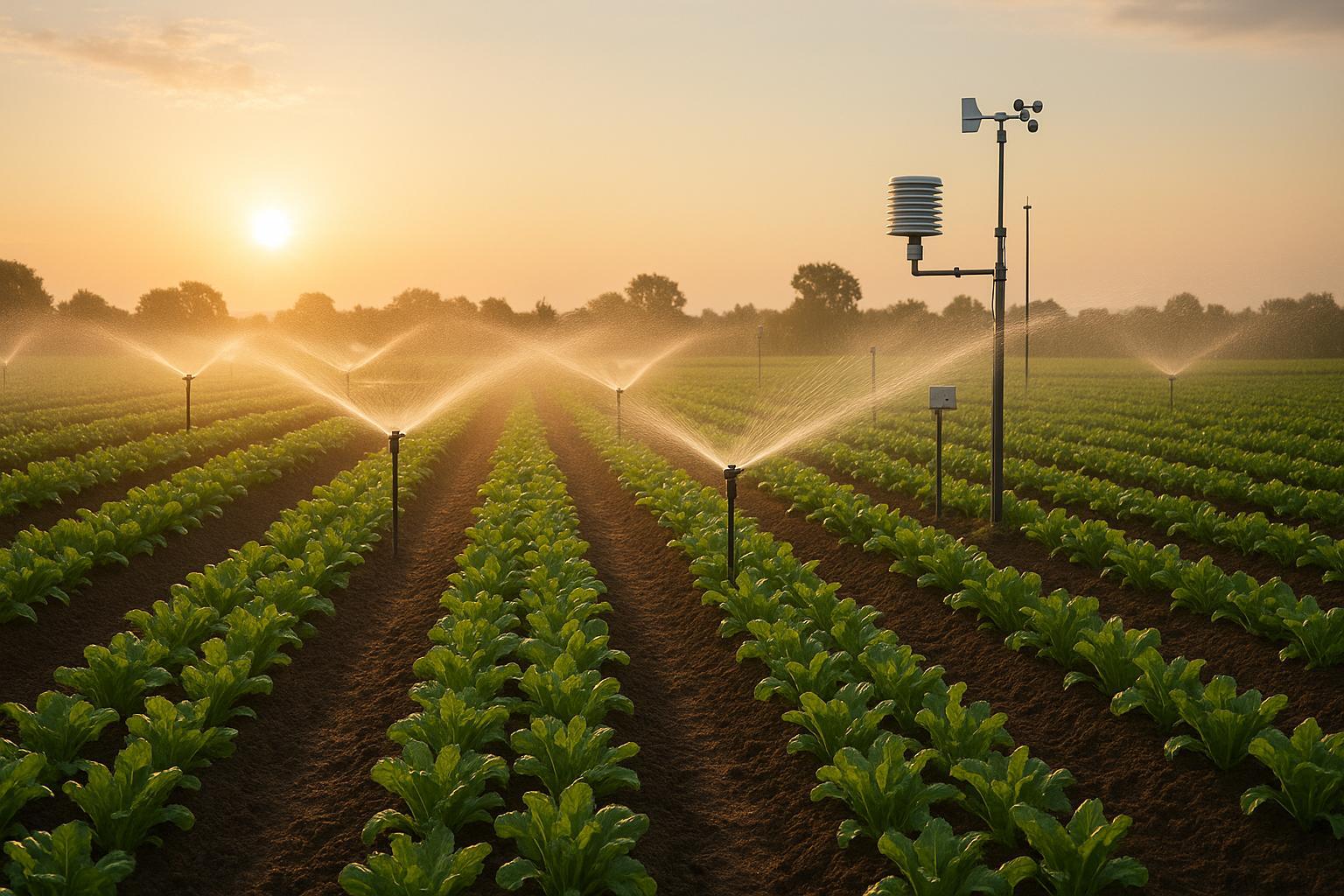
How Dynamic Irrigation Adapts to Real-Time Data
Dynamic irrigation systems utilize real-time data to optimize water use, enhance plant health, and reduce costs in gardening and agriculture.
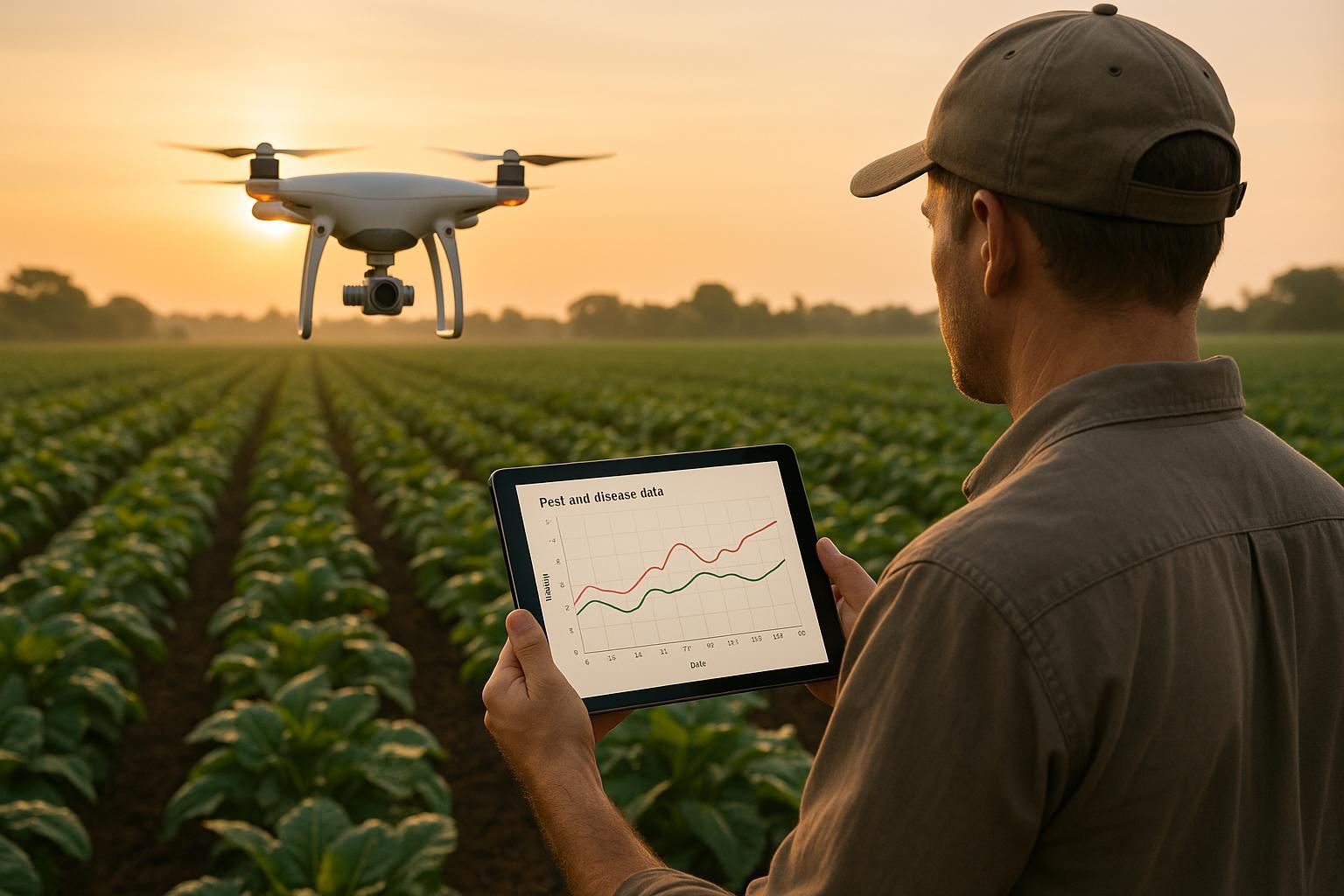
Top 7 AI Tools for Pest and Disease Management
Explore how AI tools are revolutionizing pest and disease management in agriculture, enhancing efficiency and sustainability for farmers and gardeners.
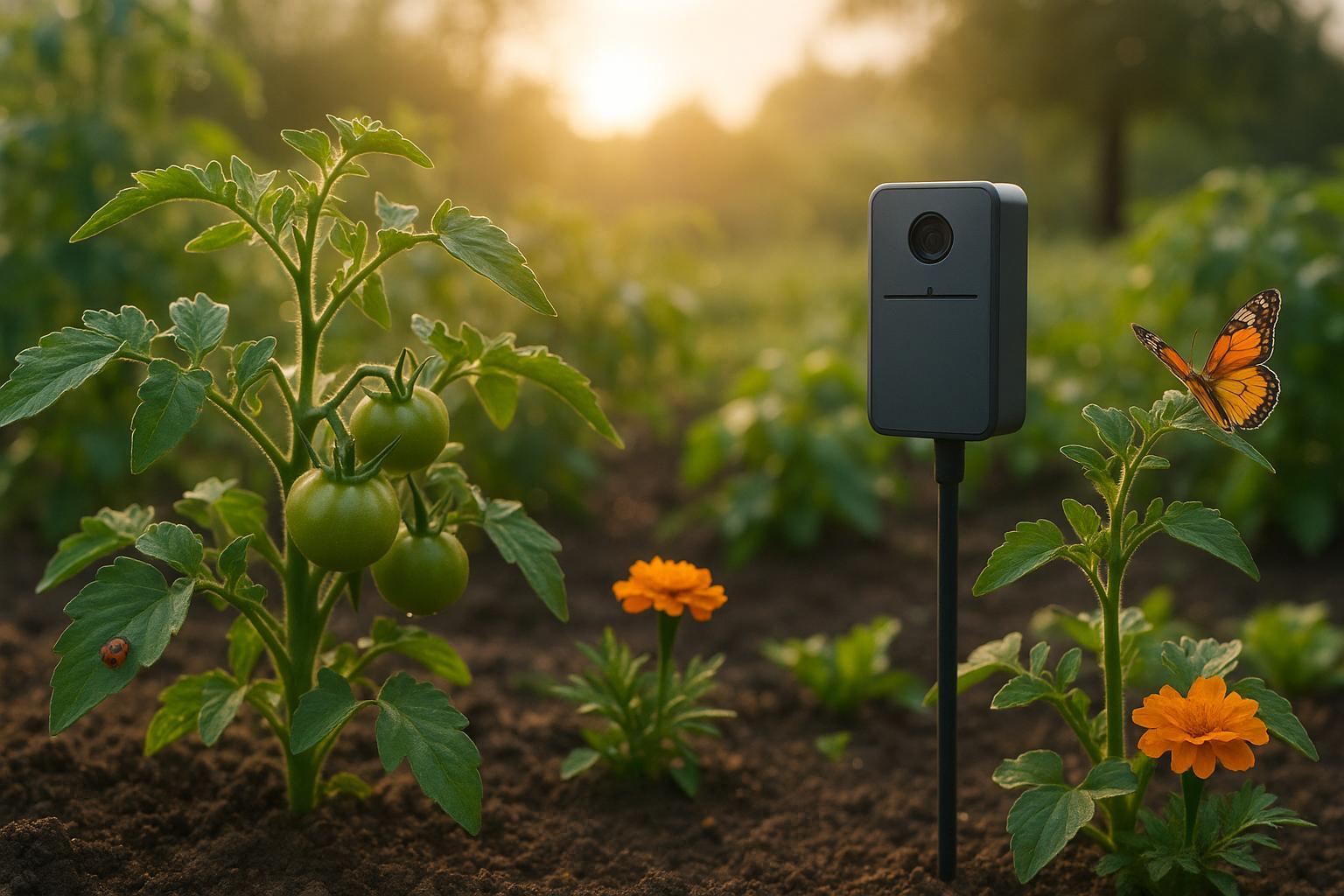
AI Pest Control: How Algorithms Detect Threats
Explore how AI is transforming pest control through early detection, eco-friendly solutions, and accessible tools for all gardeners.

How Calibration Impacts Monitoring Accuracy
Effective calibration of monitoring tools is essential for accurate data, reducing pesticide use, and ensuring healthy crop management.
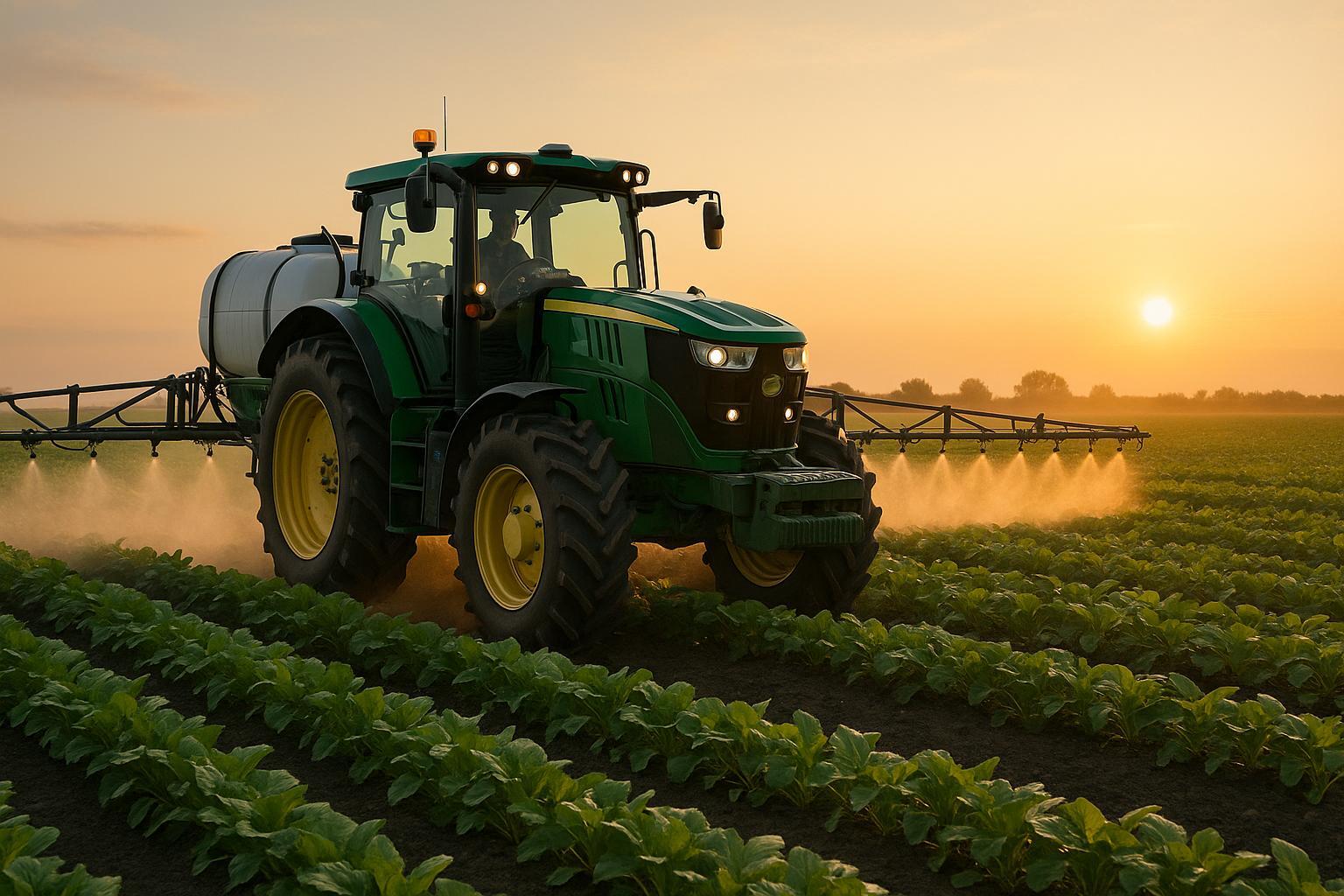
Variable Rate Spraying: Key Performance Metrics
Explore how Variable Rate Spraying optimizes pesticide use, enhancing efficiency and sustainability while reducing costs and environmental impact.
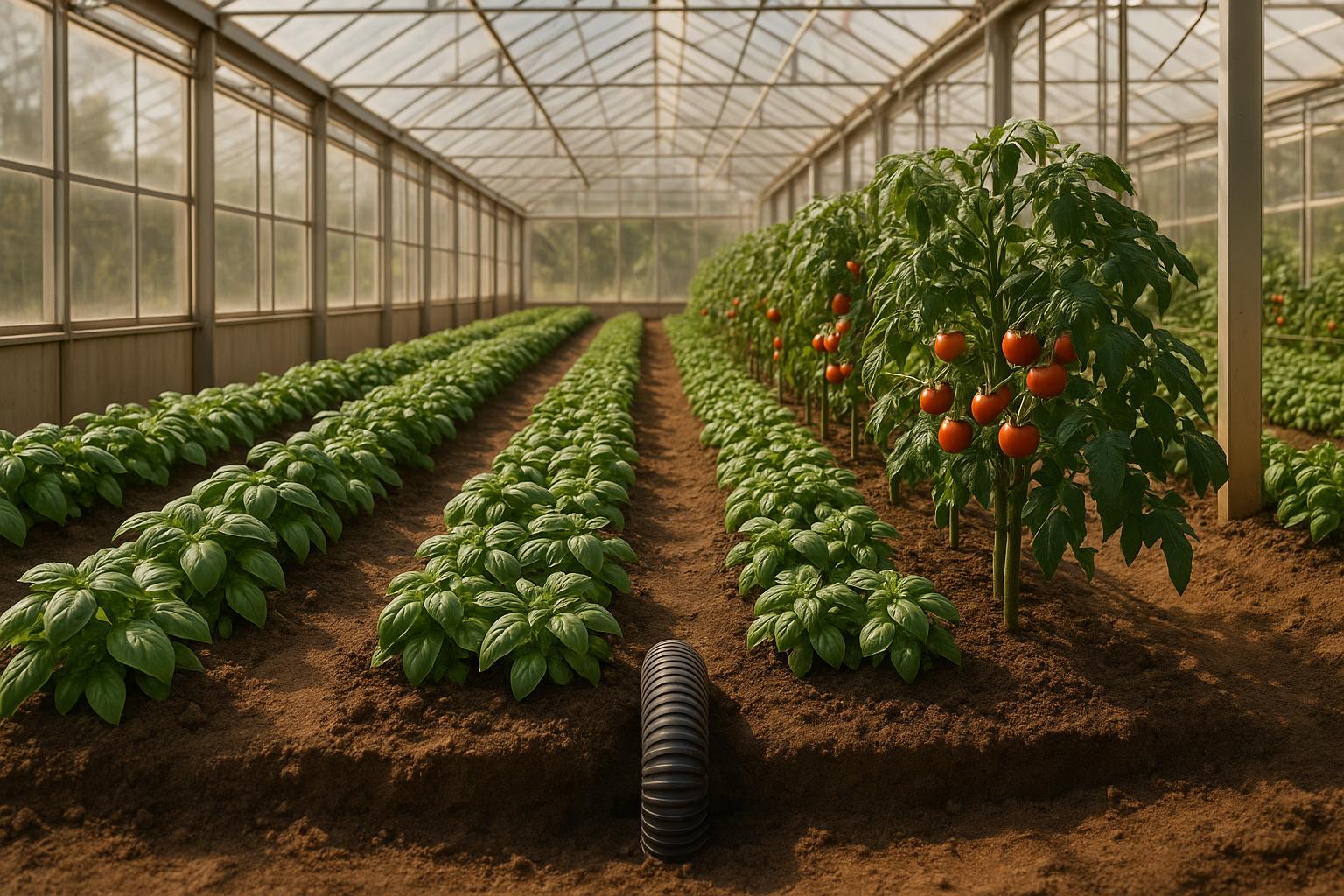
Companion Planting with Geothermal Climate Control
Explore how geothermal climate control enhances companion planting by creating optimal growing conditions, boosting yields, and reducing energy costs.